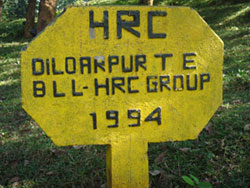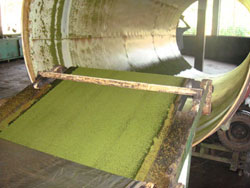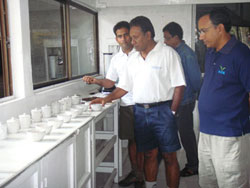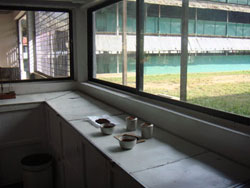Background / History

Bangladesh Tea Industry dates back to 1840 when a pioneer tea garden was established on the slopes of the hills in Chittagong where the Chittagong Club now stands. First commercial tea garden was established in 1857 at Mulnichera in Sylhet. During the partition in 1947, Bangladesh (the then East Pakistan) owned 103 tea estates, covering 26,734 hectares of tea plantation with annual production of 18.36 M.Kg. with an yield of about 639 Kg. per ha. Home consumption was around 13.64 M. Kg. upto 1955. After that home consumption went up rapidly and Government imposed 3% mandatory extension of tea area per year in 1961. Ten years later by 1970, tea area was extended to 42,658 hectares and production was increased to 31.38 M.Kg.
During liberation war in 1971, our tea industry suffered colossal damages which resulted in poor management, high vacancies, insufficient inputs, dilapidated factory machinery, inadequate maintenance etc. leading to lower yield and poor quality of tea. Through strong government support the industry soon got a big a massive development program (BTRP-1980-92) with the financial and technical assistance of the Overseas Development Agency (ODA) & European Economic Committee (EEC) production increased to 65.84 million kg. with per/ha. yield of 1255kg. in 2013.
The tea garden workers were brought in Assam (Sylhet then part of Assam) during the 1850s and 60s from different parts of British India. These workers were treated by the British planters like slaves.. With the passage of time , tea workers got the voting right and with wages increase & other facilities are being given with implement of transportation and other communication system. They can go outside of the plantation and return in the same day.
Old days because of difficult communication, tea estates were like isolated islands, within the country. So were the tea workers from different places of India. Culture and traditions were very different from most Bangladeshi village society.
Now tea workers are different from old tea workers. Except for few remote tea garden, where communication still remains difficult. Tea workers have developed a better relation with local Bangladeshi people. Most of them now speak in local Bangladesh dialect. Tea workers children are very keen to get educated, lot of them have become Doctor, Engineers of repute.
This is undeniable that last 40 years tea in Bangladesh has seen changes but the pace of growth is still slow. In order to achieve better growth & output, workers need to be given more attention to change their attitude towards their responsibilities.
After the liberation of Bangladesh tea consumption has increased many time because of industrialization, country has to import over 1.5 million KG tea to meet the shortage & consumer demand.











